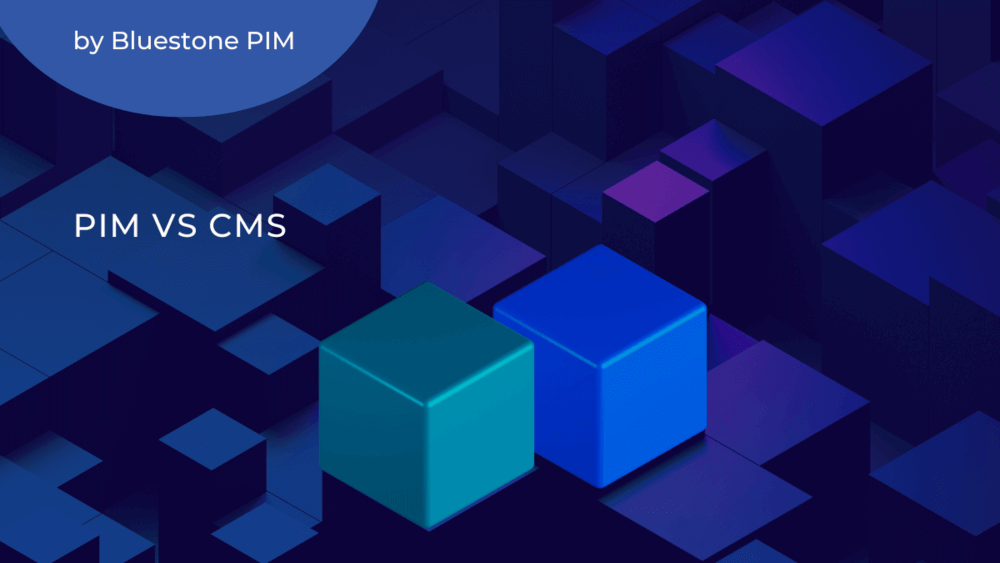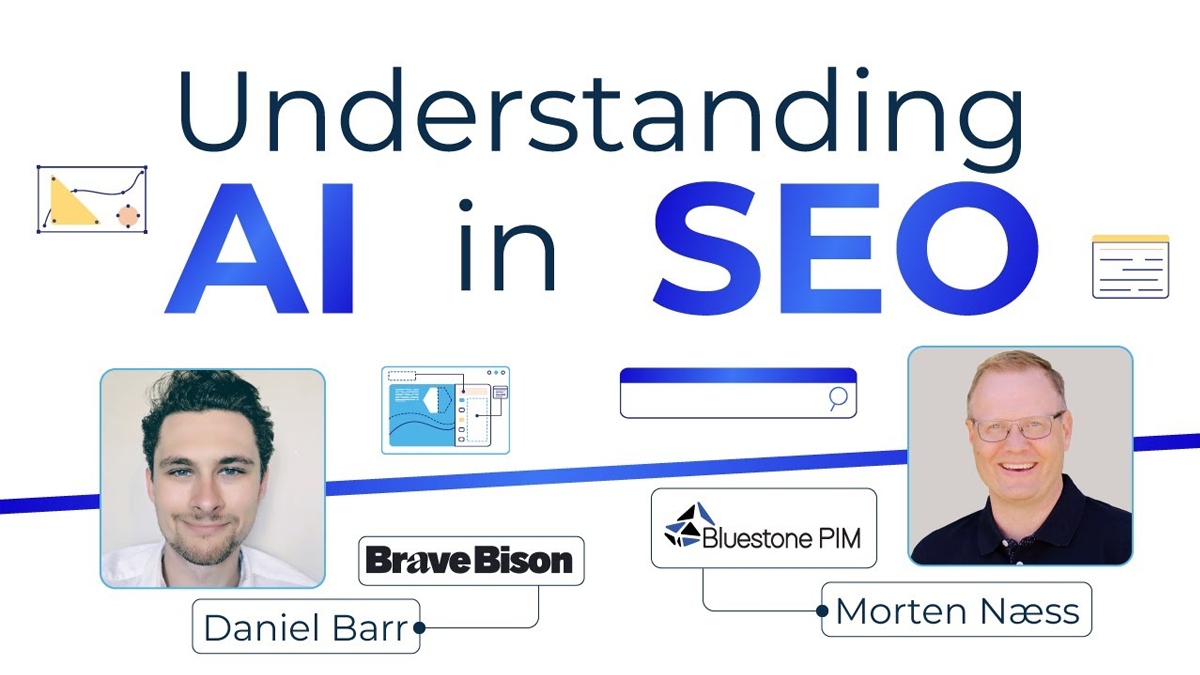Rich Product Content: Everything You Need to Know

Table of Contents
Have you ever wondered how many eCommerce sites are operating worldwide? There are as many as 27 million of them, according to a study by BuiltWith (the state on the 14th of January). Plus, every eCommerce website has at least a hundred pieces of product information, and billions of online shoppers swim in this gigantic ocean of information every day. The scale is mammoth.
If you want to meet your ideal customers in this landscape and attract them with your offering, you need to make a remarkable first impression, and it depends on many different factors.
The most important of these is rich product content.
This article will guide you through creating rich product content, elucidate its significance in the customer journey, and explore how technology can support you in achieving bold results.
What Is Rich Product Content?
Rich product content is comprehensive and high-quality product information. Some key aspects of rich product content include:
-
Detailed product descriptions — unique, engaging, and beyond a brief 1-2 sentence summary. Product descriptions must include essentials and product attributes like key features, specifications, benefits, materials used, sizing, etc.
-
High-resolution product images — clear, professional photos showing the product from multiple angles. Zoomable and 360-degree images are even better.
-
Videos — demonstration and unboxing videos present the product in action and provide a richer experience than photos alone.
-
User-generated content — reviews, ratings, questions, and answers from real customers help provide social proof and address common concerns.
-
Additional technical specs — data sheets, dimensions, materials, and certifications provide deeper insight and are necessary for highly technical products.
-
Related/recommended products — suggestions to cross-sell other complementary items help encourage additional purchases.
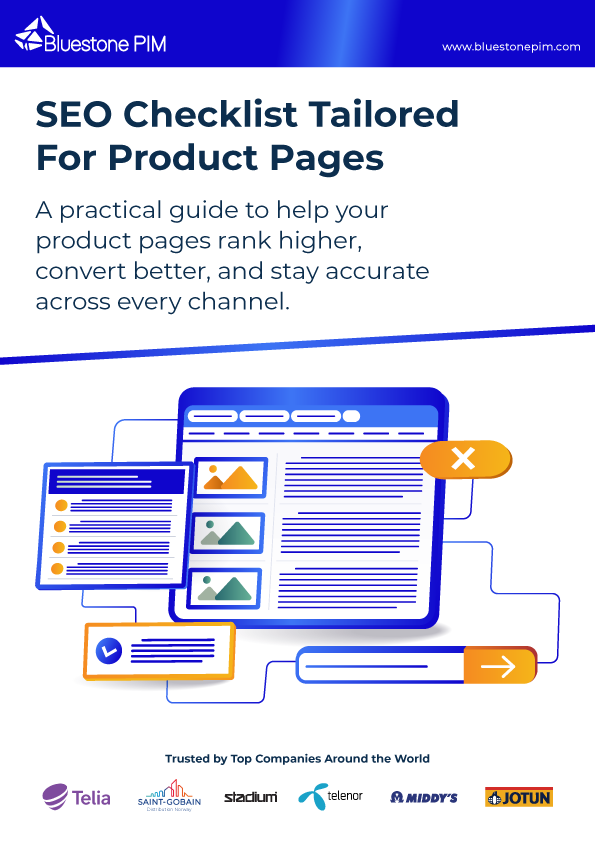
DOWNLOAD FREE E-BOOK
SEO Checklist for Product Managers
A practical checklist to help you optimise product pages at scale. Cover SEO, AEO, and GEO essentials, keep product data accurate, and improve visibility without manual work.
Three Examples of Rich Content in Online Stores
To understand the concept of rich content in practice, see how these brands representing different industries use product information to create excellent shopping experiences.
Musical Instruments (Fender)
Buying a musical instrument online can be challenging. Fender, a legendary American guitar manufacturer, understands this pain point.
That's why the company provides comprehensive product information on every product page, including high-quality zoomable photos, specifications, and a professional introductory video in which a Fender representative presents the sound and capabilities of a given guitar.
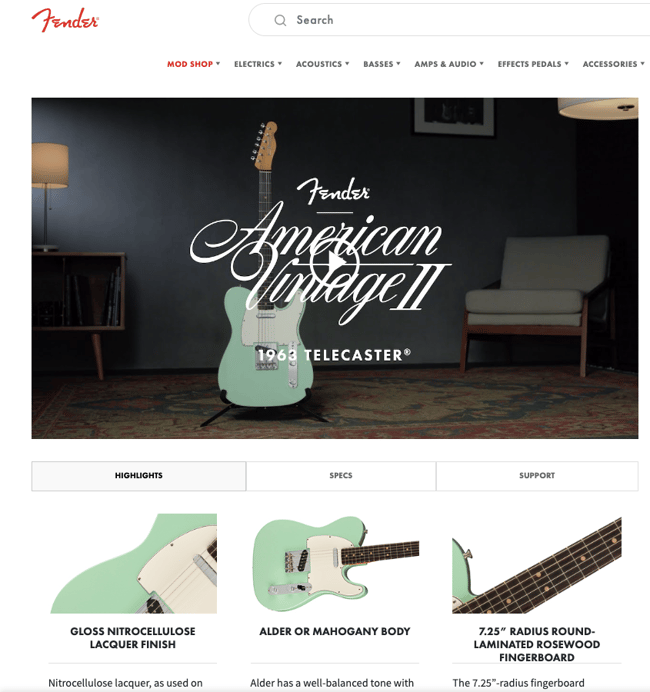
Source: Fender
Stationery (Ferris Wheel Press)
Stationery connoisseurs want to know details about paper quality or ink color tones when shopping.
Ferris Wheel Press, a Canadian stationery brand, publishes detailed product descriptions, images, customer reviews, and color profiles of each ink with different samples on their product pages.
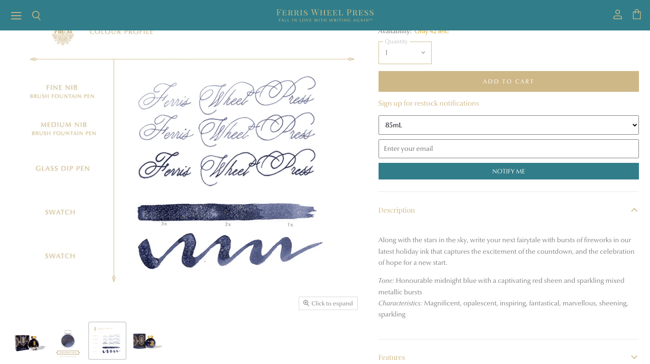
Source: Ferris Wheel Press
Washing Machines (Bosch)
Essential household appliances have numerous features and functions, and washing machines are no exceptions. The purchasing process involves checking many specifications to choose the right model, and this sounds more tedious than it is fun.
When browsing through Bosch's range of washing machines, visitors are presented with a comprehensive list of features and benefits, presented in a clear and visually appealing way. The brand also offers a simple comparison tool that allows you to compare up to four models.
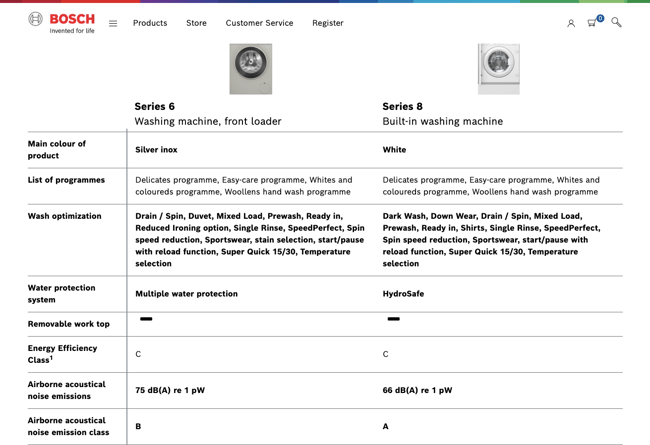
Source: Bosch
Why Does Rich Product Content Matter?
Aside from aesthetics, rich product content offers tangible benefits.
It enhances search engine optimization and makes your products easier to find in the vast digital landscape. It also builds an emotional connection with your target audience and encourages brand loyalty that goes beyond the transaction.
As we delve into the nuances of crafting compelling product narratives, remember that you're not just selling a product — you're selling an immersive experience.
How Does High-Quality Product Content Boost eCommerce Customer Experience?
Product information is the backbone of the customer journey. Information must be accurate and up-to-date so it can help reduce customer dissatisfaction and the number of returns.
But there are also engaging visuals, compelling and informative product descriptions, and videos. Brands can use them to enhance customers’ understanding and push the decision-making process forward.
Every element of rich product content can benefit your business. Reviews and feedback from customers provide social proof and credibility, and reassure potential customers. An engaging experience keeps customers on-site longer, and that increased time leads to higher conversion. Recommendations for related products facilitate additional/cross-selling, which can increase the size of the shopping cart.
Additionally, if you answer commonly asked questions upfront, for instance, in an FAQ section on the product page, customers won't need to contact support. This simplifies the purchase process for them.
And finally, by providing comprehensive information about the product, you're showing that you want to meet the customer's needs, which is a mile step toward building trust and loyalty.
7 Foolproof Tips for Creating Rich Product Content
Creating high-quality product content is essential for marketing your products online. Here are some tips to help you develop rich content that converts visitors into buyers.
#1 Start with a Strategy
The first thing you need to do is define the goals of your content and your target audiences.
Understand what motivates different buyer personas so your content speaks directly to their needs and pain points. With a clear strategy, your content remains consistent and on-brand.
#2 Invest in High-Quality Media
As the adage in multiple languages goes, "A picture is worth a thousand words."
Product images and videos are among the first things customers see. Ensure your media library consists of professional, high-resolution images that showcase your products from various angles.
It's worth taking several well-lit photos, including overhead shots. Invest in lifestyle photos as well — images that show the product in action provide useful context.
Don't forget about videos either, especially the demonstration videos. They show the product in action and thus illustrate its user-friendliness. According to statistics from Wyzowl, 84% of consumers have been convinced to purchase after watching a brand's video.
#3 Write Epic Product Descriptions
Descriptive copy helps customers understand what makes your products unique.
Beyond specs, outline key benefits, useful features, and application scenarios. People tend to remember evoking stories better than numbers. Use persuasive headlines and storytelling tactics. Following some copywriting rules will help you craft an imaginative and compelling product story.
One more pro tip: before going live, it’s good to test different headlines and descriptions to see which generates the highest engagement and conversions.
#4 Refer to Social Proof
The power of customer reviews and testimonials is undeniable, and they are considered one of the most effective content marketing tools.
To use them well to your advantage and generate more revenue from every client, you should regularly ask for reviews and photos from your happy customers to display on product pages.
Secondly, actively pursue user-generated content. Encourage your customers (in personalized emails) to share posts on social media about how they use your products. Create relevant hashtags to make this content more discoverable.
#5 Offer Cross-Selling & Up-Selling Wisely
Suggesting complementary products is a great way to expand basket size.
Upsell customers to premium versions or add-ons by showing them value propositions for upgrades (highlight testimonials here). Communicate the specific benefits of the higher-priced version over the base product, use comparisons, and offer a nice starter, such as introductory discounts.
Remember to customize recommendations based on the purchase history. Cross-selling and up-selling always go hand in hand with personalization.
#6 Optimize Rich Product Content for Search Engines
You've worked hard and created killer descriptions and amazing product videos. It would be a shame if shoppers didn't find them in search engines. That’s why rich product content needs to be SEO-friendly, too.
Here are four pro tips:
-
Use relevant keywords in headlines, text, and alt text for images to boost search rankings and ensure customers can easily find your products online.
-
Use structured data, such as JSON-LD or microdata, to make information more visible in search engines
-
Get user feedback — continuously improve based on customer questions, reviews, and comments.
-
Test on multiple devices — content should be optimized for desktop, mobile, and tablets.
#7 Centralize All Information to Maintain Consistency
If product content creation in your organization is split between different teams and individuals, keeping assets in separate folders and spreadsheets is not the best idea.
A central repository, also referred to as a single source of truth, with automatic updates and a standardized product taxonomy is essential. This makes the work of your teams, retailers, and subcontractors easier and reduces the risk of errors and inaccuracies.
Modern consumers expect a consistent, seamless customer experience, which manifests itself in the same level of detail and standards on all product pages, among other things. Consistency strengthens customer trust in the brand.
Create and Maintain Rich Product Content with PIM
Centralizing all rich media in one place manually seems to be a tedious job, but technology is coming to the rescue.
PIM (Product Information Management) solution was designed to help companies manage, enrich, and distribute product information at scale. Let’s take a look at the features that can help you create rich product content:
-
Centralized repository. A PIM platform serves as a single source of truth for all product data and media in the organization, preventing duplication and the use of incomplete, outdated, or unapproved data.
-
Product taxonomy. PIMs use schemas to structure and label products in the online store, facilitating the provision of high-quality, consistent content.
-
Product content enrichment in teams. In a PIM platform, multiple internal teams, such as marketing, sales, and customer support, along with contractors with access, can collaborate in workflows to ensure accuracy and enrich product content.
-
Syndication and integration. API-first PIM software automatically distributes content to all sales and commerce channels, including social media, marketplaces, and kiosks, making PIM an indispensable tool for building omnichannel sales.
-
Manage different languages and contexts. With PIM software, you can set up multiple versions of product information for different scenarios, making it easy to manage country-specific content when entering new markets.
-
Analytics and feedback. Insights into content usage help teams optimize resonating content and identify gaps.
Some companies may rely on a Content Management System (CMS) or Enterprise Resource Planning (ERP) system to carry out these activities, but they have their flaws. If there is a need for centralized management of rich content at scale with quality controls and omnichannel distribution, then PIM is the ideal choice.
If you want to know more about PIM capabilities and benefits, check out our Complete Guide to PIM eBook.
Wrap-Up
Creating rich product content is a continuous process, demanding regular updates and enhancements to remain sharp and stand out in the fiercely competitive eCommerce landscape. It's no walk in the park, but the payoff is substantial because customers seek reliable guides on their shopping journey.
By adhering to the tried-and-true tactics outlined in this article, you can create rich product content that not only grabs attention but also turns casual visitors into loyal customers. Keep fine-tuning your content based on engagement and sales metrics, ensuring that it resonates well with your target audience.
Ready to transform your product content? Get in touch with our PIM advisors today to schedule a consultation or schedule a personalized demo meeting and test the product enrichment features of Bluestone PIM.


